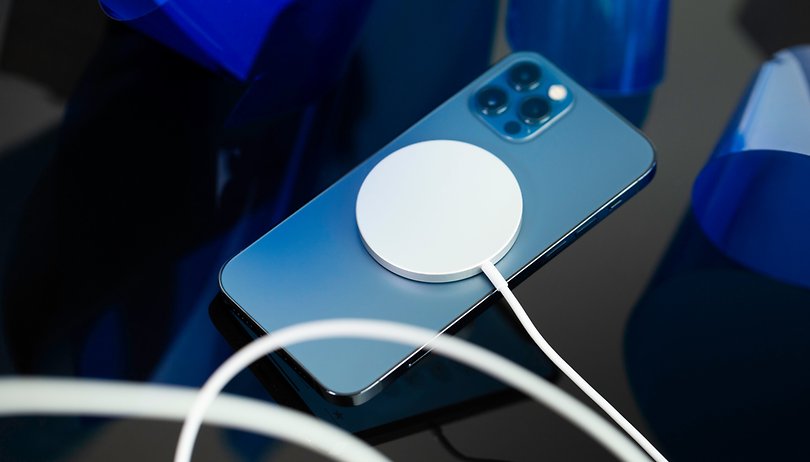MagSafe: everything you need to know about Apple's new charging technology


A few weeks ago, reports caused a stir when it came to restrictions on charging using Apple's new MagSafe. Now there are more details about wireless charging the new iPhones 12.
With MagSafe, Apple presented the resurrection of magnetic accessories at the launch of the iPhone 12 in October. Years ago MagSafe was used to charge your MacBook, but now it's a series of magnets arranged in a circle, which are placed inside the iPhone 12 or accessories such as cases.
MagSafe can also be used in combination with the MagSafe charger to fill up the iPhone 12. Qi continues to work in the background, which is why old familiar charging mats can still be used. In combination with Apple's own charger, some iPhone 12 models can be charged with up to 15 watts.
iPhone 12 and MagSafe: 20 Watt power supply uses newer Power Delivery specification
Shortly after the first shipments of the iPhone 12, however, there were reports that this performance could only be achieved in combination with Apple's own 20W USB-C Power Adapter. In some places, there was quick talk that Apple was using a proprietary solution to outdo the competition and boost sales of its own power supply.
But it didn't take long before it became clear that this was not the case. Apple only uses a new version of the USB Power Delivery specification, specifically USB PD 3.0, for the new 20 Watt power supply. This standard, which was passed in mid-2019, allows charging with up to 9 Volts and 2.22 Amps, among other things. Power supplies manufactured before 2020 may not yet support this standard.
USB PD 3.0 offers some other helpful features. For example, the new specification also allows the transmission of additional information about the charging process of the device to be charged. This includes the temperature or details about possible problems during charging.
Power supplies can also communicate more accurately with the devices to determine the appropriate voltage or current. The steps, which are negotiated every 10 seconds, can be as little as 20 mV or 50 mA. This can help to achieve a more efficient charging process. AppleInsider has a more in-depth description of USB-C PD and the details of the specifications.
So if you are looking for a suitable power supply for the MagSafe charger and don't want to go for Apple's 20-watt version, you should look out for USB PD 3.0 support when buying. Many manufacturers will probably explicitly mention compatibility with MagSafe and the full 15 watts in the future. A search at Amazon already shows several power supplies that support Power Delivery 3.0.
In the following video, YouTuber Alvin Lim tests a number of USB-C power supplies that can charge iPhones via MagSafe with 15 Watts and even more:
iPhone 12: Charging with MagSafe at 15 Watt – with one exception
While it was previously assumed that all iPhone 12 models could be charged with up to 15 Watt via MagSafe, Apple has revealed a few more details in an updated support document. These include, for example, that the iPhone 12 mini can only be charged with a maximum of 12 Watt when using the official MagSafe charger. All other versions of the iPhone 12 reach up to 15 Watt.
Apple also writes that its own charger is compatible with power supplies that can deliver at least 12 Watt (5 V at 2.4 A). As expected, this results in a slower charging process.
Furthermore, if devices are connected to the smartphone via Lightning during charging, including wired headphones, the power is reduced to 7.5 Watt. According to Apple, this is necessary to comply with standards set by the regulatory authorities. At the same time, Apple mentions that due to the compression of the magnets, leather cases, in particular, can show a round imprint.
Source: Apple Insider, Apple Support


















